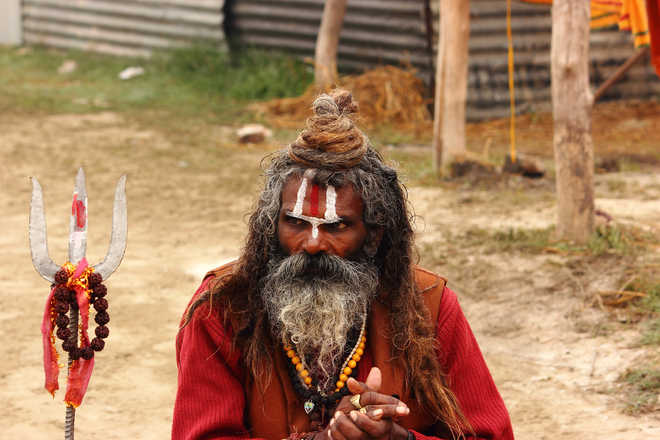Dr Satish K Kapoor
Parrots recite.
So what?
Can they read the Lord?
— Basaveshvara
Do Lingayats form a distinct religious category? Perhaps no, as can be seen from its hoary past rooted in Veerashaivism, the heroic Shiva cult, going back to the dawn of civilisation. Religion cannot be founded as one starts a shop, even when it is patronised by state power. Prophets of the world came to unite mankind. But identity-conscious followers circumscribed their teachings and formed micro groups.
Lingayasts are so named as they wear the linga of Shiva in a silver casket around the neck, day and night, to be reminded of His benign presence, as also their own Shiva-nature. The linga is considered Shiva himself. It stands for the union of para-Shiva and para-Shakti. Linga is also used for meditation, as can be seen from the work, Shri Siddhantashikhamani with Shri Maritontadarya’s Tattvapradipika , which defines a Veerashaiva as one ‘who places his Ishta Linga on the palm with his mind fully concentrating on it and worships it with his mind totally withdrawn from all external actions.’The Veerashaiva saints are popularly called sharana or Shiva-sharana that is those who are under Shiva’s canopy of grace. During the 12th century, there appeared a galaxy of sharana-s in Karnataka. Among them, Basaveshvara, also called Basava and Basavanna (1105-1167), meaning elder brother, was the most prominent.
Born in a Brahmin family at Ingalesvara-Bagevadi, he found social inequality repulsive, religious rites and ceremonies, redundant, and animal sacrifice, morally unacceptable. After attaining spiritual realisation, at Kudal Sangam, the confluence of Krishna and Malaprabhah rivers - where he saw the Lord in all his glory and was graced by him, he left for Kalyana where king Bijjal appointed him as the chief treasurer. It was here that he became the nucleus of socio-religious reformation. He opposed caste distinctions, ritualism, iconolatry and the dominance of hereditary priests. He founded Anubhava Mantapa, which became a great centre of spiritual study, discourses and debates under its president, Allama Mahaprabhu, attracting people from near and far, including the mystic woman-saint, Akka Mahadevi, who had discarded every worldly thing, even her clothes in defiance of social norms. To quote her: ‘You can …peel away every strip/ you wear/ but can you peel the Nothing/ the Nakedness/ that covers and veils.’
Virashaivism regards Shiva and Shakti as fundamental to existence: Shakti is Shiva, like fragrance in a flower. It preaches a form of qualified non-dualism, called shakti-vishishtadvaita, which considers god and the human soul as one, like the sun and its rays. What to speak of social or religious divisions, Devara Dasimayya, an early Vachana-poet, rejected even biological distinction between males and females, as the soul is sexless.
‘Suppose you cut a tall bamboo/ In two;/ make the bottom piece, a woman,/ the headpiece, a man;/ rub them together till they kindle;/ tell me now,/ the fire that is born,/ is it male or female ?’(A. K. Ramanujan’s translation)
To describe the Lingayat faith as different from Veerashaivism, and to divorce it from Sanatana Dharma, is not in consonance with the eternal, and all-embracing Indian religious tradition, in which Shiva, the Supreme Lord, is a principal figure. There are as many sects of Shiva as his names and attributes – each devotee is a cult in himself as most do not follow any dogma while propitiating the Lord, who is considered the heart of the cosmos, and above formalism. Sanatana Dharma that forms a link between time and the timeless, has floated various forms of Shaivism, the Lingayat faith being one of them. Can the branch disown its roots?
(Dr Satish K Kapoor, a former British Council, is a noted educationist, historian and spiritualist based in Jalandhar city)
Unlock Exclusive Insights with The Tribune Premium
Take your experience further with Premium access.
Thought-provoking Opinions, Expert Analysis, In-depth Insights and other Member Only Benefits
Already a Member? Sign In Now










